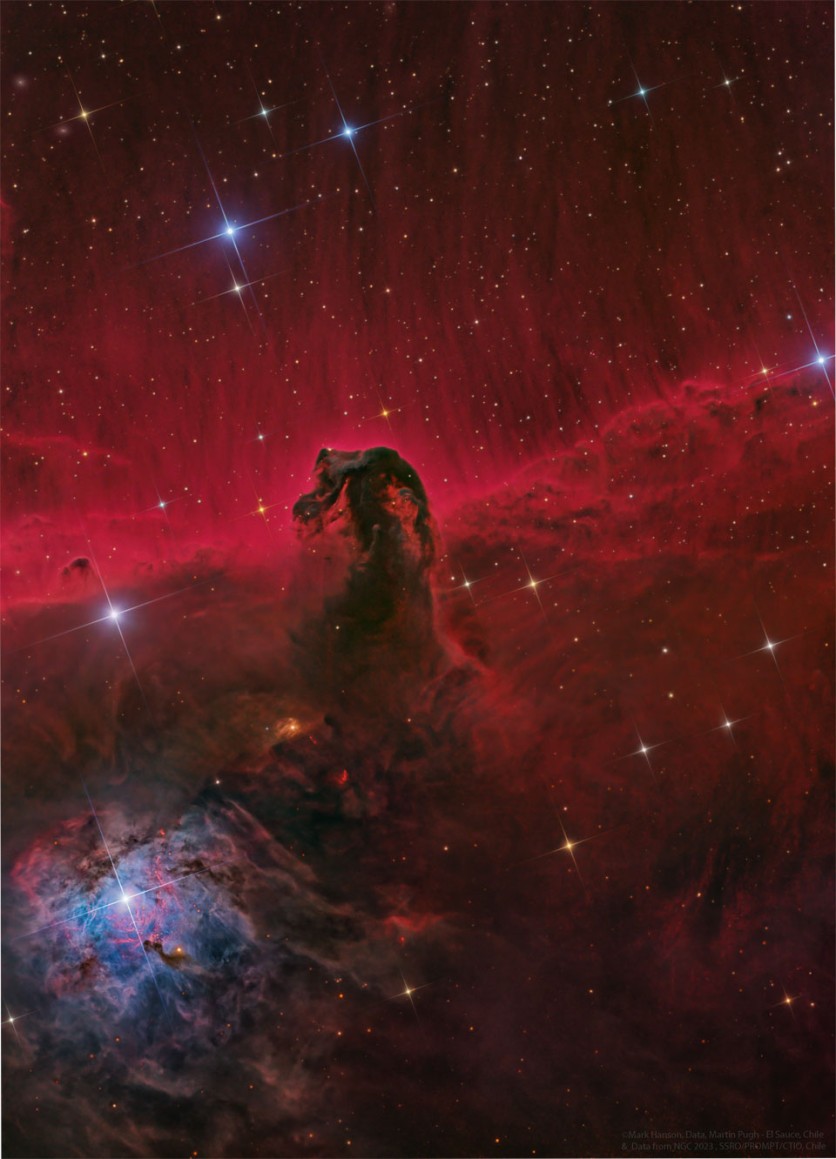NASA's Picture of the Day offers a haunting glimpse of the Horsehead Nebula, a celestial marvel sculpted by the forces of stellar winds and radiation.
This striking interstellar dust cloud, located some 1,500 light-years away, has taken on a shape that bears an uncanny resemblance to a horse's head. Immersed in the vast Orion cloud complex, this stellar spectacle is appropriately known as the Horsehead Nebula, cataloged scientifically as Barnard 33.

Horshead's Celestial Portrait
The celestial portrait was captured by Mark Hanson and Martin Pugh using the SSRO, PROMPT, CTIO, and NSF telescopes. The image unfolds against the backdrop of the glowing red emission nebula IC 434.
The dark cloud, standing approximately five light-years tall, owes its visibility to the fact that its obscuring dust creates a captivating silhouette against the radiant IC 434. Within this cosmic enigma, stars are in the process of being born, unveiling the dynamic and ever-evolving nature of the universe.
The captivating image also reveals the presence of the contrasting blue reflection nebula NGC 2023, positioned at the lower left of the composition. This reflection nebula encircles a hot, youthful star and adds a layer of celestial complexity to the cosmic tapestry.
The mesmerizing color image presented by NASA's Picture of the Day is a product of merging both narrowband and broadband images captured by multiple telescopes.
This meticulous combination of imaging techniques provides a comprehensive and visually stunning portrayal of the Horsehead Nebula and its celestial surroundings.
Read Also : [LOOK] NASA's Picture of the Day Features the Moon, Jupiter, and Venus Shining Above a Rock!
A Dark Horse in Space
The Horsehead Nebula is a dark nebula because it appears as a dark silhouette against the background of bright, glowing gas and stars. The nebula is primarily composed of dense, opaque dust clouds that partially block the light coming from the bright, emission nebula IC 434 behind it.
The intense radiation from nearby stars, particularly Sigma Orionis, ionizes the hydrogen gas in IC 434, causing it to emit the characteristic red glow associated with hydrogen-alpha emission.
The iconic shape of the Horsehead Nebula resembles the profile of a horse's head and neck, which has made it one of the most recognizable and photographed deep-sky objects. The dark nebula itself is not illuminated and remains visible primarily due to the contrast with the brighter background.
Observing the Horsehead Nebula is challenging because it is a faint object and requires dark skies and appropriate equipment. Astrophotographers often capture stunning images of the Horsehead Nebula by using specialized filters that isolate specific wavelengths of light, allowing them to highlight the contrast between the dark nebula and the surrounding hydrogen gas.
The Horsehead Nebula is a popular target for amateur astronomers and astrophotographers and has become an iconic symbol in the field of astronomy. Its striking appearance and proximity to other well-known objects in Orion make it a captivating feature in the night sky.
Related Article : NASA's Hubble Space Telescope Captures 'Butterfly Nebula' In Stunning Motion | Fun Facts About This Beautiful Space Butterfly

ⓒ 2025 TECHTIMES.com All rights reserved. Do not reproduce without permission.




